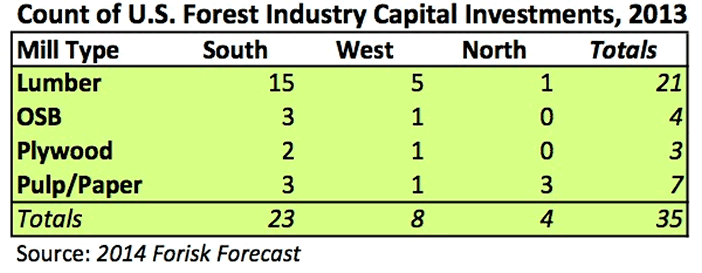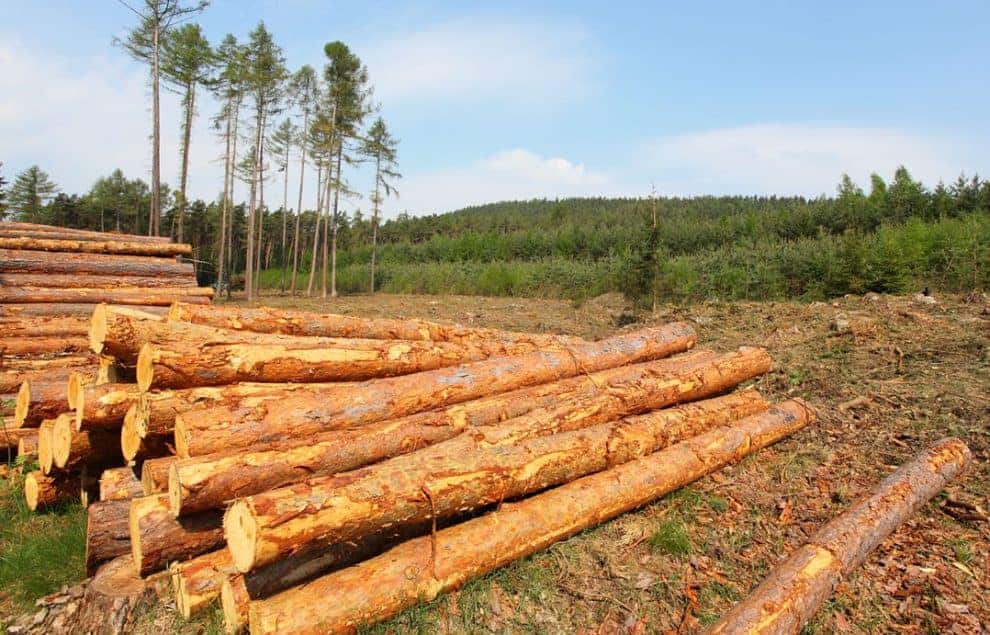All arrows continue to point up for timber prices and revenues received by U.S. timberland investors in 2014 and moving forward. Why? Because capital investment activity in U.S. forest industry capacity continues to increase. Announcements from 2013 alone include investments and reopenings of sawmills, oriented strand board (OSB) plants, and plywood facilities. This article captures the overall trend in Forisk’s research of capital assets, which find forest products firms currently improve existing assets while simultaneously adding new capacity to meet current and expected demand for building products.
Where are Forest Industry Firms Investing?
In 2013, most capital improvements at U.S. forest products facilities were for sawmills in the South (see table). This reiterates two themes observed across asset classes related to wood and timber. First, the forest industry prioritizes investments tied to recovering housing markets, rather than growth or opportunities related to consumer demand for packaging or paper products. In 2013, 26 companies made over $2.1 billion in capital investments at 35 facilities in the U.S. These facilities include 21 sawmills, 4 OSB/panel facilities, 3 plywood facilities, and 7 pulp/paper mills.

Second, firms throughout North America – including firms based in Canada – increasingly view the U.S. South as operationally advantaged and cost competitive for capital investments. Regionally, 66% of the projects occurred at facilities in the South. And Canadian lumber producers continue to actively invest in and acquire assets in the U.S. South. Four Canadian firms – Interfor, Southern Parallel, Canfor, and West Fraser – invested over $200 million in assets in the U.S. South in 2013.
Implications for Timberland Investors
Capital investments and increasing demand for wood raw materials – sawtimber, chip-n-saw and pine pulpwood and in-woods chips – in all U.S. regions speak to strengthening markets. The Forisk Forecast for grade timber prices in the U.S. South and Pacific Northwest by state projects increases of 6% to 13% for 2014, implying stronger revenues and returns for current timberland investors.
This content may not be used or reproduced in any manner whatsoever, in part or in whole, without written permission of LANDTHINK. Use of this content without permission is a violation of federal copyright law. The articles, posts, comments, opinions and information provided by LANDTHINK are for informational and research purposes only and DOES NOT substitute or coincide with the advice of an attorney, accountant, real estate broker or any other licensed real estate professional. LANDTHINK strongly advises visitors and readers to seek their own professional guidance and advice related to buying, investing in or selling real estate.










Add Comment